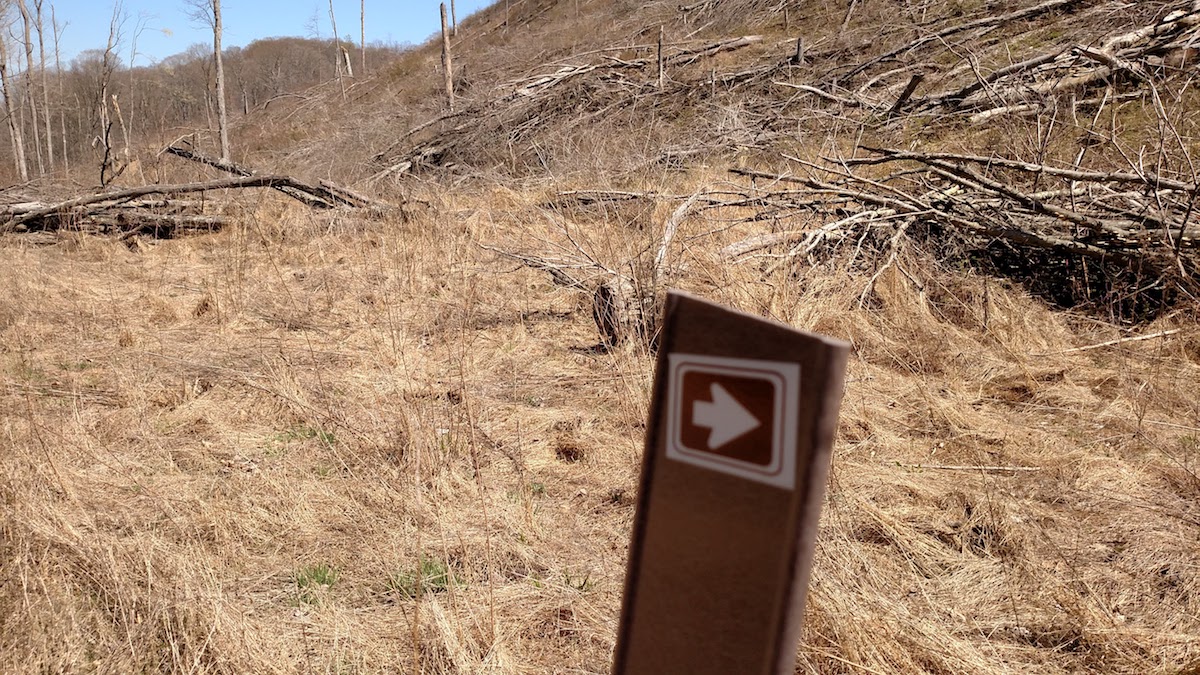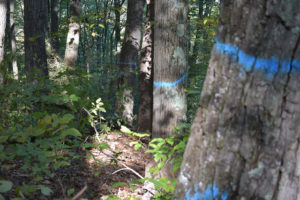After hundreds of contacts to the Governor’s office, more than 60 stories and letters to the editor in media outlets across the state, a $150,000 offer to preserve the forest, a letter signed by 228 scientists stating the ecological case for leaving some forests to develop naturally, and increasing numbers of Republican legislators speaking out against the current aggressive logging, the Indiana Dept. of Natural Resources has had to explain itself. They’ve produced a video series, editorials in the media, a URL called “yellowwoodtruth.com” and e-blast sent today.
IFA and our members welcome the opportunity to engage with these messages. Here’s a rebuttal of the material on the Division of Forestry’s website. Rebuttals of their videos are to come.
The Department of Natural Resources (DNR) has transformed nearly 160,000 acres of once neglected and abandoned farm and forest land into the healthy and diverse forests that exist in Indiana today, including the Yellowwood State Forest’s backcountry. It is true that the DNR restored agricultural land to forests starting in the early 1900s. Wouldn’t they want to leave some of these same forests to develop into the kind of forest you might have seen in Indiana in the early 1800s?
Forest practice and research shows that periodic timber removal assists in maintaining the overall health of the forest, including managing for endangered species, soil and water protection, sustainable timber, and recreational activities. Learn more about timber harvesting in Indiana State Forests. How is forest health defined? A “healthy” forest produces merchantable timber such as oak, in the shortest possible time, according to DNR foresters. And, there is much visual documentation of timber removal that decidedly has not enhanced recreational activities.

The periodic strategic removal of trees in managed harvests opens the forest floor to sunlight, allowing new trees to develop. Logging by single-tree selection, which targets mostly stressed, diseased, and declining trees, is part of managing for these conditions in the backcountry area. DNR should recognize research that indicates certain percentages of each subspecies of ash are resistant to the ash borer. DNR’s plan to log all ash trees, whether they’re resistant or not, will hasten the demise of this species.
DNR’s Division of Forestry is currently leading an effort to harvest select trees from the 299 acres of the Yellowwood State Forest’s backcountry. Single-tree selection will be used, as it has been used in the previous 13 harvests of the now Morgan-Monroe/Yellowwood State Forest backcountry area. Using single-tree selection now, and 20 years from now, and another 20 years from now, meaning the forest — which could have been considered an old-growth forest roughly 30 years from now — will never get the chance to become old. And to get its certification from the Forest Stewardship Council, the state promised to leave some state forest in “old-growth condition.” They won’t say where they are doing that.
Five to seven trees per acre may be removed during this thinning. The DNR’s forestry division determines the trees to be removed dependent on each tree’s health and impact on the overall forest area. A portion of the 1,700 marked trees is clustered together. Lots of bystander trees will die in the process of removing these 1,700. Gravel roads will run through the forest.
Studies conducted by independent researchers working on State Forests show that species of conservation concern, such as the timber rattlesnake, hooded warbler, worm-eating warbler, and Indiana bat, can benefit from conditions created by periodic thinning of the areas like the backcountry’s current closed canopy. These species have also been documented reproducing in closed-canopy forests. They adapt as needed to logged areas. But these animals don’t need logging to survive or thrive.
The people who run the Division of Forestry are indeed scientists in the field of forestry. But Indiana’s forests do not belong to them to treat as a private landowner would treat his or her land. These are the taxpayers’ forests. And, you, the public, should have a voice in how they are managed. Time to call Governor Holcomb again, who could be a hero if he were to call off this logging plan. 317-232-4567.

